 |
|
|
|
|
|
|
| Facts about Qatar |
| Qatar - The Country |
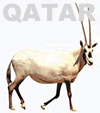 |
|
Climate
Qatar is an arid country characterised by its hot humid summers and mild winters.Summer temperatures can rise to 50°C and winter temperatures can vary between 7 °C and 24 °C.
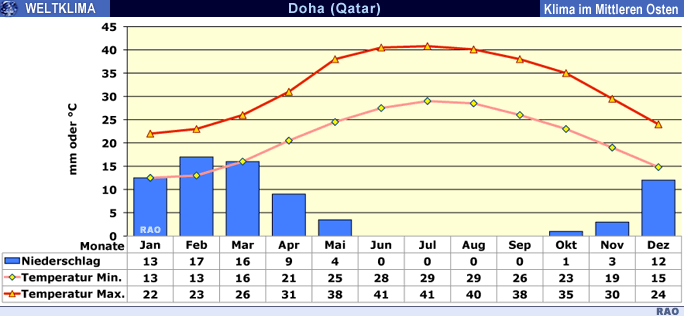 |
 |
Population
On April 30, 2010, the Qatar Statistics Authority estimated the total population of Qatar as being 1,670,389 individuals; 1,270,968 males and 399,421 females. The makeup of ethnic groups is approximatelyQatari (Arab) 20%; other Arab 20%; Indian 20%; Nepali 13%; Filipino 10%; Pakistani 7%; Sri Lankan 5%; others 5%. Arabic, English, Malayalam, Hindi, Tamil, Kannada, Tagalog, Urdu and Punjabi are the most widely spoken languages
Local time and business
Qatar Local time is three hours ahead of Greenwich Mean Time (GMT) with no daylight savings adjustments. The working week in Qatar runs from Sunday to Thursday, with Friday and Saturday being days off. Government ministries' working hours are from 7am - 2pm, Sunday to Thursday.
Shop times vary, but are generally 8.30am - 12.30pm and 4pm - 9pm, although shopping malls tend to be open all day between the hours of 10am and 10pm. Some shops do not open at all on Fridays, while others open for a few hours early in the morning and re-open in the late afternoon. Most malls and shopping centres open from 4pm.
Health
Tourists need to pay for treatment at government hospitals, primary healthcare centres and private hospitals or must have adequate health insurance to cover the hospital fees.
Language
The official language is Arabic, but English is widely spoken and understood.
Government
Qatar is officially a hereditary Constitutional Monarchy with its ruler taking the title Emir. The country's first (provisional) constitution was written in 1970 and amended in 1972. A 150-article permanent constitution became effective on June 2005. HH the Emir Sheikh Hamad Bin Khalifa Al Thani is Head of State, Minister of Defence and Commander in Chief of the Armed Forces. The Heir Apparent, Sheikh Tamim Bin Hamad Al Thani, was appointed on August 5, 2003 and is the Emir's fourth son.
Currency and Banks
The currency is the Qatari Riyal (QR), which is divided into 100 Dirhams. The exchange parity has been set at a fixed rate of US$1 = QR3.64. Notes in circulation are QR1, QR5, QR10, QR50, QR100 and QR500. Most major international credit cards such as Visa, MasterCard and American Express are widely accepted. Qatar has more than 100 bank branches and there are hundreds of ATMs across the country. Bank hours are 7.30am - 1.30pm Sunday to Thursday with some branches that open all day at shopping centres. There will be banking and foreign exchange facilities at the QNCC and selected major hotels, which will operate for Conference opening hours.
Climate
Qatar has a typical desert climate with hot summers and mild winters. Summer temperatures can rise to 50C and winter temperatures can vary between 7C and 24C. Rainfall averages 70mm per year, usually between October and March. In December, the temperature ranges from 24C to 14C.
Telecommunications
The country code for Qatar is 974. There are two mobile phone service providers in Qatar: Qatar Telecom (QTEL) and Vodafone. They both offer international direct dialling to most countries. Travellers with international roaming may connect via these service providers for calls and text messages. Prepaid SIM cards are available at all Qtel and Vodafone service centres, shops and authorised dealers at a small cost. You need to show a copy of your passport and complete the registration form.
| Qatar Vision 2030 |
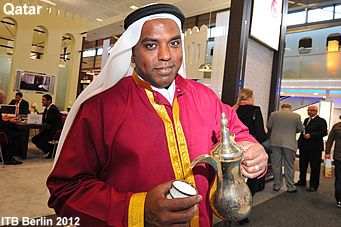 |
|
The document, produced by Qatar's General Secretariat for Development Planning and published in 2008, outlines a comprehensive framework for Qatar's path to a brighter future for all its citizens. The plan rests on four pillars: human, social, economic and environmental development.
"Comprehensive development is our main goal in striving for the progress and prosperity of our people," the Emir of Qatar, His Highness Sheikh Hamad bin KhalifaAl Thani, has said of the Vision.
At the heart of the Vision is Qatar's commitment to responsibly use its gift of resources to improve the standard of living of its citizens. This includes protecting public and personal freedoms, promoting moral and religious values and traditions, and guaranteeing security, stability and equal opportunities.
"Charting economic and social progress in modern societies depends on a clear vision and a strategy about how to get there. Wise political leaders know the direction in which they would like their societies to develop, balancing the interests of present and future generations," writes His Highness Sheikh Tamim bin Hamad Al Thani, the heir apparent, in his forward to the Vision. "Qatar National Vision 2030 builds a bridge between the present and the future."
The Vision also provides clear principles for developing the country in an environmentally friendly way. Qatar's permanent constitution already makes this commitment, stating that "the State shall preserve the environment and its natural balance in order to achieve comprehensive and sustainable development for all generations."
Qatar Foundation
Another part of the goal is to transform Qatar from a carbon-based economy to a knowledge-based one "by unlocking human potential". In accordance, Qatar is investing massively in education and research, spearheaded by the Qatar Foundation, which was founded in 1995. Her Highness Sheikha Moza bint Nasser, the chairwoman of the Qatar Foundation and the wife of the Emir, has, through her work with Qatar Foundation, established Qatar's enormous contribution to the body of knowledge.
The Foundation has adopted as its emblem the sidra tree, a species that is native to Qatar, under which poets, scholars and travellers would traditionally meet to discuss and share ideas while shaded from the sunshine. It carries out this mission through the three sidra "branches" of education, community development, and science and research.
The resources being poured into this third branch demonstrate the commitment being made by Qatar to achieve its economic transformation, which is part of the Qatar National Vision 2030.
The country is investing almost 3 per cent of its annual GDP in scientific research, which is more than $5 billion according to 2011 figures. The foundation reflects the country's ambition of being a key player in terms of science, community development and education.
Money invested through the Foundation has been used to set up a number of initiatives, including the Qatar Science and Technology Park and Sidra Medical and Research Centre, which is due to open at the end of this year and will be the first academic medical centre in the Middle East.
| Green projects in Qatar |
With sustainable development and environmental awareness among the core themes of the Qatar National Vision 2030, here are some of the projects operating around the country helping to ensure that these ambitions become a reality.
Qatar Sustainability Network
Launched in October, the Qatar Sustainability Network brings together leading researchers, academics and activists to enhance the country's culture of research, science and sustainability by directly engaging with the public. During COP18/CMP8, the QSN will help Arab civil society groups and non-governmental organisations lobby and advise on developments of the global climate change debate. The network's vision is to inspire, inform, empower, educate and build capacity and involvement to improve the quality of life for future generations in Qatar, and become an active platform to advance the science-based sustainability agenda in Qatar and beyond. Founding members of the network include the Ministry of Environment, Qatar National Food Security Programme, Qatar Energy & Environment Research Institute, Qatar Green Building Council, Qatar Friends of the Environment, Sustainable Qatar, Tata Engineering Consultants, Texas A&M Qatar university and UNESCO. www.qsnetwork.org
Qatar Environment and Energy Research Institute
Qatar Environment and Energy Research Institute (QEERI) works to mitigate climate change and contaminants harmful to the environment, as well as contaminants affecting humans. QEERI's environmental work focuses on Qatar's desert and marine ecologies, plant and animal life and air quality. Its work on contaminants affecting humans considers issues such as lead and mercury levels in the environment, carbon emissions and other pollutants that pose risks to human health.
www.qeeri.org
Qatar National Food Security Programme
The QNFSP seeks sustainable and environmentally friendly solutions to protect Qatar's environment in alignment with the Qatar National Vision. The vision implies that Qatar will seek to preserve and protect the environment, including air, land, water and biological diversity. As for the QNFSP, it will be addressing the issue of food security through innovative and environmentally friendly solutions at a regional level. www.qnfsp.gov.qa
Qatar National Convention Centre - Green Initiatives
Qatar National Convention Centre is committed to supporting and encouraging sustainability practices. To achieve this goal, QNCC develops and incorporates into its operations environmentally friendly products and processes. The QNCC was conceived with a focus on sustainability. It is the first convention and exhibition centre of its kind that was built to the gold certification of the U.S. Green Building Council's Leadership in Energy and Environmental Design (LEED).www.qatarconvention.com
Friends of the Environment Centre
The Friends of the Environment Centre (FEC) strives to play an effective role in collaboration with the government and non-governmental organisations concerned with the environment in Qatar to maximise environmental safety, health and natural beauty and to reach the best possible level of sustainable development for human enjoyment and well-being. The FEC has numerous projects under its umbrella, including the Birds of Qatar Project, which raises awareness of birds, conserves their habitats, and tracks migratory paths in order to use the data for their protection. Another project is the Green Tent Programme, located at one of Qatar's protected mangrove forests. The programme teaches children the importance of being responsible stewards of their environment. Other projects include the A Flower Each Spring Programme, which promotes local plant species and urges people to plant them, and the Terrestrial and Marine Biodiversity project.
Qatar Green Building Council
Founded in 2009, the Qatar Green Building Council (QGBC) is driving sustainable growth in Qatar through education and networking programmes, demonstrating commitment to a prosperous and sustainable future through cost-efficient and environment-friendly building-practices. It works to increase awareness and knowledge of green building practices. The QGBC achieves these aims in three ways, including technical expertise development, research and innovation, and sustainability education and training. The group collaborates locally, regionally and internationally, participating in international conferences, including World Green Building Councils, and it actively pursues the establishment of a MENA network of Green Building Councils.www.qatargbc.org
Mapping the Mangroves
In April 2012, a small team of students on a Qatar Foundation International (QFI) exchange programme to Doha, along with local scientists and Conservation International (CI), headed to Al-Dhakira, the location of one of Qatar's beautiful mangrove forests. Using their smartphones, the students took photos of the mangroves, and the flora and fauna that flourishes there.
The images and notes taken by students were curated in an online database that monitors the health of these important ecosystems. The joint Qatar Foundation International, Conservation International and Carnegie Mellon University project for Qatar now has data contributors from Qatar, Brazil, Palau, Costa Rica, the United States and Australia. The crowd-sourcing, citizen scientist initiative can one day help in developing a basic set of information for researchers. Part of the appeal of the project is that it engages the younger generation through a medium that they use every day. Mangrove forests are important ecosystems as they transfer many times more carbon from the atmosphere to the ground than tropical forests.
Sahara Forest Project
This cutting-edge pilot project plans to grow vegetables in the desert while producing clean water and green electricity. The Sahara Forest Project, currently being built in Mesaieed, about 50km south of Doha, will have a specialised saltwater greenhouse, a Concentrating Solar Power (CSP) facility and outside vegetation in a desert climate. The CSP system uses mirrors to concentrate the energy from the Sun to create high temperatures, and produce superheated steam that can power a conventional steam turbine. The project was featured at the COP15 in Copenhagen. Since then, it has received support from high-profile figures, including the prime ministers of Qatar and Norway, as well as the UN Special Envoy on Climate Change. A side-event within the UN precinct in Doha during COP18/CMP8 will offer tours to visitors who wish to see the Sarah Forest Project.
Quranic Garden
The sacred words of the Holy Quran included many references to plants native to the region of the earliest Muslims, including those in desert and Mediterranean climates. It also refers to tropical plants from other regions, such as the banana tree and ginger plant. Qatar Foundation and UNESCO have taken note of all of the plants that appear in the Holy Quran or are mentioned in the Hadith and Sunnah, the sayings and practices of the Prophet Muhammad, with the aim of creating the Quranic Garden at Education City in Doha. The garden will serve not only as a place of meditation, but as a research centre for students to learn about conservation and raise awareness of the moral importance of environmental stewardship.
| The Arabian Oryx (Oryx leucoryx)
The regal Arabian Oryx (Oryx leucoryx), which was hunted to near extinction, is now facing a more secure future according to the latest update of the IUCN Red List of Threatened Species™. Its wild population now stands at 1,000 individuals. "To have brought the Arabian Oryx back from the brink of extinction is a major feat and a true conservation success story, one which we hope will be repeated many times over for other threatened species," says Ms Razan Khalifa Al Mubarak, Director General of the Environment Agency-Abu Dhabi. "It is a classic example of how data from the IUCN Red List can feed into on-the-ground conservation action to deliver tangible and successful results." |
 |
The Arabian Oryx, a species of antelope found only on the Arabian Peninsula, is locally known as Al Maha. It is believed the last wild individual was shot in 1972. This year, thanks to successful captive breeding and re-introduction efforts, the oryx has finally qualified for a move from the Endangered category to Vulnerable on the IUCN Red List-the first time that a species that was once Extinct in the Wild has improved by three categories. "Conservation does work and species can recover, as shown in the case of the Arabian Oryx. Using data from the IUCN Red List, an opportunity exists for governments and society to guide conservation programmes to put the brakes on species extinctions," says Julia Marton-Lefèvre, IUCN’s Director General. |
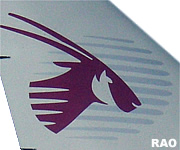 |
| Source: IUCN - International Union for Conservation of Nature, June 2011 |
| External Links |
| IUCN - International Union for Conservation of Nature |
| Attractions in Qatar |
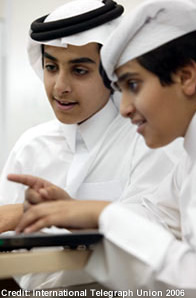 |
|
The museum houses one of the world's most spectacular collections of Islamic art, with artefacts spanning 1,400 years and three continents. With everything from jewellery and ceramics to manuscripts and precious stones, the museum has been described as a "house of masterpieces". www.mia.org.qa
Katara Cultural Village Foundation
Katara is the cultural centre of Doha and is bursting with exhibitions and attractions. Its amphitheatre, opera house and theatre offer a series of world-class events. It also stages an impressive programme of art and photography exhibitions and works to foster local and regional talent via the Qatar Philharmonic Orchestra, Qatar Music Academy, the Fine Arts Society and many more. The beach facilities are popular with families at the weekends and the restaurants, such as L'wzaar where you can pick your own fish, are always busy.www.katara.net
The Corniche / Dhow boat ride
The Corniche offers an unrivalled view of the city, particularly at sunset when Doha's glittering skyline seemingly melts into water below under the setting sun. This 8km promenade, dotted with palm trees and lawns, is popular at any time of day, and there is always a steady stream of joggers, dog walkers and families. Here you can see the traditional Dhow fishing boats, the majority of which have been converted into pleasure boats offering trips around the bay.
The Pearl
Built on top of an old pearl diving site, this luxury development on the edge of Doha is set on an artificial island shaped like a string of pearls. With a selection of award-winning international restaurants and cafes, most with outside seating and marina views, it is a popular place to meet friends for a meal. The walkway around the Porto Arabia marina is always lively, with people taking an after-dinner stroll alongside the mega-yachts, or visiting the luxury clothing stores.
Mangroves
About 40km from Doha is the tiny Al Khor, or Purple Island, next to the village of Al Khor. The fish-shaped island features a mangrove forest, which is home to fish, crabs, shellfish and many types of birds - the most notable of which are the pink flamingos.You can drive out for the day or camp on the island and enjoy a night in these beautiful natural surroundings.
Al Koot Fort
Al Koot Fort was built in 1880 to protect Souq Waqif. It is located in central Doha on the site of the old town. The fort has been used as a police station and in 1906 it began to be used as a jail. This led to the creation of one its most notable features - the roof of the mosque was removed so that guards could keep watch over the prisoners while they prayed. The building now houses a museum featuring photos and traditional Qatari handicrafts.
Al Zubarah
Al Zubarah village is one of the largest and best-preserved examples of an 18th to 19th century merchant town in the Gulf and is one of Qatar's most important archaeological sites. It was one of the Gulf's key pearl trading ports, with coins and ceramics showing trade links reaching Asia, Iran, Turkey, Africa, Europe, and the Gulf.Many of these artefacts are housed in the fort that was constructed in 1938 on the ruins of a previous fort. It now houses a museum that can be visited for free.
| Advice for visitors |
Based on international best practices, ictQATAR has adopted a comprehensive national ICT strategic plan tailored specifically to the unique circumstances and requirements of the country.
Qatar is proud of its hospitality and has a tradition of welcoming visitors from across the globe. With its wealth of culture and heritage, and a very low crime rate, Doha is an exceptionally safe and diverse city to explore. The country has a relaxed attitude to life, but understanding its local customs is the best way to avoid misunderstandings and ensure that you enjoy a smooth trip.
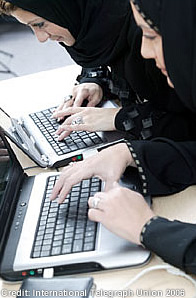 |
|
Men should not approach traditionally dressed Qatari women for cultural reasons. Qatar has a low crime rate but should you need to contact the emergency services please dial 999.
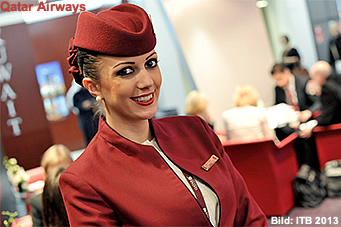 |
|
Out of respect, Qatari women and families should not be photographed without their permission.
Permission should be sought before taking photographs of Government and military buildings, members of the military and police. If you are unsure whether it is appropriate to take a photograph, always ask
Water
Tap water is safe to drink in Qatar and exceeds World Health Organisation standards. Many people choose to drink bottled water; however this is both unnecessary and bad for the environment.
Alcohol and Drugs
In Qatar alcoholic drinks can be bought with or without food in hotel bars and restaurants. Outside these venues, however, alcohol can be bought only with a resident's permit from a limited number of outlets. If you bring alcohol into the country, you can request a receipt from the airport, where it will be stored until your departure. As in all societies, there is a zero-tolerance policy on drink-driving and drugs.
Facts to Consider
Power Supply in Qatar is 240 volts. Electrical plugs are British standard 3 pin square. Adaptors to other formats are readily available at the many shopping malls
| Useful contact numbers |
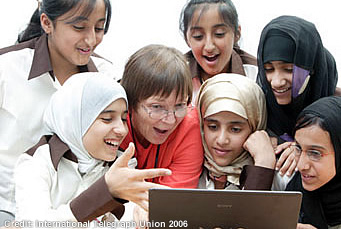 |
|
Many hotels offer a limousine services which will be more expensive and there are also unofficial taxis whose fares are variable.
| Source: COP18, Qatar 2012 |
| Weitere Informationen |
| RAOnline: Weitere Informationen über Länder |
|
|
|
|
